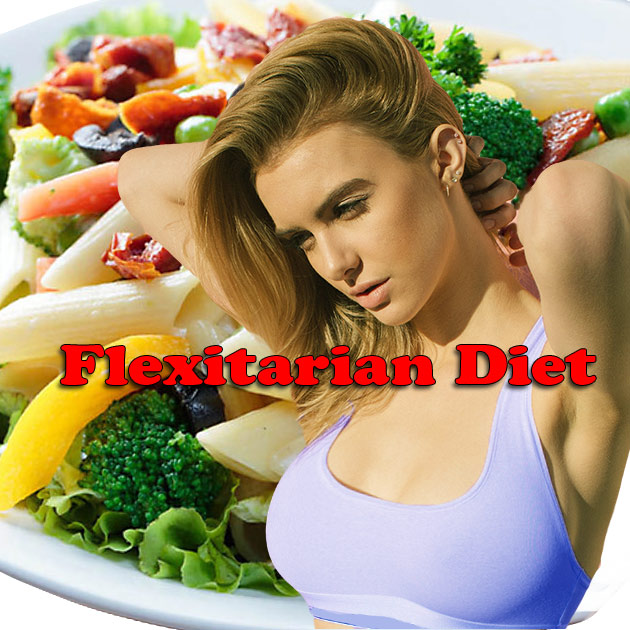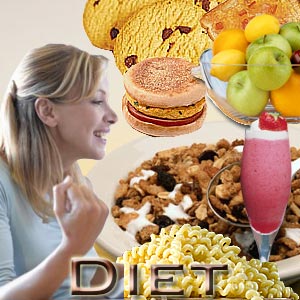Flexitarian Diet

Struggling to ditch meat? Switch over to Flexitarian diet – a diet that allows you to be flexible. True to its name, Flexitarian diet makes it possible to gradually reduce dependence on meat and consume more plant-based foods. It isn't about resisting but reducing. Sans any will-power busting scenario, the three levels of flexitarianism, beginner, advanced and expert level helps the switch over a success. Term it a diet or a lifestyle, even vegetarians or vegans who decide to reintroduce meat into their diet can embrace Flexitarian diet. Check out what it is all about.
I am a Flexitarian because
Flexible + vegetarian, the combination of two words is Flexitarian. Dawn Jackson Blatner, a registered dietitian is the creator of Flexitarian diet. The portmanteau word - 'Flexitarianism' was added to oxford dictionary in 2014 and the diet is a decade old.
According to the creator of the diet, Flexitarians tend to live longer (3.6 years long) and weigh less (15 pounds less) as compared to omnivores. The diet also reduces the risk of diseases like cancer, diabetes and heart disease.
Here are top reasons why people switch over to Flexitarian diet. Health reasons, ethical reasons, save money, concern over animal welfare, food safety etc.
- To lose weight and maintain optimal health
- Lower BMI
- Managing or preventing diabetes
- Care for environment. 17 % of greenhouse gas emission is from food we eat. More meat eating increase levels of carbon dioxide.
- To get rid of craving for non-vegetarian food.
- To reap the benefits of a vegetarian diet with a lot of variety sans any restriction.
- Don't want to commit to a full vegetarian or vegan lifestyle.
- Conforms to federal government 2015 dietary guidelines
- Processed meat is carcinogenic to humans.
- Flexitarian diet is ranked best for:
Shift gradually
Flexitarian is a ‘meat-reducer' eating meat within meal on some days but not every day of the week. Meat or fish can be in the diet occasionally, but not part of a regular meal plan.
But the shift has to be gradual and regular. If you have grown up loving meat, poultry and fish, cutting it off completely can be a task. Imagine saying NO to meat right from your next meal. In all probability, your body is likely to respond in any one or a combination.
- Low energy level/feeling sluggish
- Sense of taste may decline
- Reduced testosterone level
- More gassy or bloated than usual
- Sleeplessness/disturbed sleep
- Stomach may hurt
- Emotional ups and downs
- Urge to snack often
- Less acidic
- Break outs on the face.
You know what to expect after going on a meat-free diet for a while. Not to worry. The side effects go away as your body adjusts to the changes. A gradual shift supports the body to accommodate the dietary changes. However, identify if Flexitarian diet is right for your individual health and wellness goals. Is it right for you?
To make the shift doable, the creator of the diet, Dawn Jackson Blatner recommends a step-by-step approach.
- Start off with two NO meat days for two days in a week
- The remaining days, consume in total 26 ounces of meat.
This is only a recommendation. Flexitarian diet has no strict rules or recommended number of calories and macronutrients. The goal is to eat more nutritious plant-based foods and less meat.
For best results, the days you eat meat do not have to be consecutive. The approach guides in making smart food choices. In the days to come, the diet would consist of minimally-processed, nutrient-dense vegetables, fruits, grains and dairy.
Beginner: Have two meatless days per week (26 ounces of meat or poultry per week) or 6-8 meatless meals/21 total meals each week.
Advanced: Skip meat 3 to 4 days a week (18 ounces of meat or poultry a week) or 9-14 meatless meals/21 total meals each week
Expert: Meatless 5 or more days a week (9 ounces of meat or poultry) or 15 plus meatless meals/21 total meals each week.
Starting Flexitarian diet
Having made up your mind to be a part-time non-vegetarian and treat to an occasional sizzling hot chicken streak, it is time to track how often the meat intake is and if it's breakfast, lunch or at dinner. Write down every portion of meat consumed for a week.
Before planning your own Flexitarian diet, find out what a typical Flexitarian diet is. It is a flexible 5-week plan. The total Flexitarian diet is 1500 calories per day.
- A typical Flexitarian diet (day) would have 3 meals and 2 snacks (in total 5)
- Each breakfast contains 300 calories, lunch 400 calories and dinner 500 calories
- Each snack contains 150 calories each
This is a guideline to plan your calories intake. Depending on your activity level, gender, height and weight, metabolic heart rate and metabolism, it can be more or fewer calories.
This is your first week.Your goal is to reduce meat intake by cutting out one serving. If you are beginning with a meatless Monday (most beginners opt for Monday) or a Tuesday or a Wednesday or any day of the weak, you need to stock substitutes for meat. But, meat is meat and the flavor cannot be truly replicated. It is the savory flavor - Umami. A non-meat Umami taste is good enough to fulfill taste buds. Three foods that can substitute meat in dishes are Mushrooms, beans, and chickpeas.
Of these, edible mushroom which is neither a veggie nor a fruit but a type of fungus has this unique savory flavor, Umami or glutamate taste and the texture makes it a near resemblance to meat. This explains why mushrooms make it easier to be the perfect base for vegetarian versions of classic meat dishes like burgers, meatballs, tacos, hot dogs, Bolognese and even steak. Prepare a simple pasta dish with mushrooms. Porcini mushrooms offer a great Umami kick. Infuse a stock, sauce or soup and it will turn out to be Meatier than Meat!
It's the same with beans, chickpeas and even lentils and eggplant. Anasazi beans, black beans, black-eyed peas, chickpeas, lentils, lima beans and kidney beans…there are different varieties. Some need to be soaked overnight or for at least 5 hours prior to cooking. Adding beans can cause flatulence, a normal occurrence and is temporary. Good rinsing and boiling with fresh water reduce the flatulence causing enzymes. As the body gets adjusted, this will lessen.
The shift can cause concerns about proteins. An average person's daily requirement of protein is 50 grams. Animal proteins sources are complete as they contain all of the essential amino acids that the body needs to function effectively. Plant proteins are not as they lack one or more amino acids. However, to get all essential and non-essential amino acids from plants, you can combine different plant based proteins. Buckwheat is an exception. This is one very complete plant based protein.
The psychological effect of missing meat can induce a feeling of imbalance in protein. In as many meals this week, swap half the meat with an equal serving of plant protein. It can be chickpeas, with black beans etc. Also, set aside time to infuse creativity, experiment recipes and relish meat-free dishes. Replace Chili for dinner, hamburgers, patties, replace with cooked beans, instead of chicken use lentils for soups, add chickpeas to your pasta or try buckwheat porridge.
This is your second week. Aim is to forgo meat for a handful of meals. Flexitarians suggest that by gradually pulling back the frequency with which you eat meat, your taste buds get times to adapt well until you reach a level that is comfortable for you. You could probably choose to go for a no meat Monday and Wednesday.
If you are concerned about and feel less-satisfied without meat, add something that's enjoyable and also filling. A high-fiber, high-protein foods help you feel full, like, beans, quinoa combined with spices to add flavor.
Cutting down meat also means addressing nutrient changes. Iron and B12 are two additional nutrients non meat-eaters should remember. Iron naturally occurs in beans and leafy greens. B12 comes from animal sources like dairy and meat. Unless you continue to consume some animal products, like diary and eggs, there is no need for B12 supplements or fortified foods.
Compared to the first week, you will require more meat-free recipes. Keep handy at least 5 purely vegetarian dishes or meat-free recipes. Source from family, friends or Google. To make things easier, repeat recipes that you enjoy most.
Tips to make a successful second week of Flexitarian diet:
- Breakfast with oatmeal topped with nuts or avocado toast with a sprinkle of chia seeds
- Lunch menu - salads with lentils or fresh soybeans pods or sometime frozen plus falafel in a pita.
- Snack menu – Handful mixed nuts/seeds, a fruit and a drink/Yogurt.
- Dinner menu – Stir-fry with tofu, quinoa patty.
Third week and on: The past two weeks confirm you are heading in the right nutritional direction and it has not been that hard. Marching in to the third week of Flexitarian diet, you are accustomed to having meat as a side-dish and vegetables the go-to. Your focus is to prioritize veggie-rich dishes, grains, nuts, dairy, eggs, beans etc. You are now ready for Meatless Monday, Wednesday and only eat a small portion of meat for dinner on all of the other days. After assessing sustenance level, you will be comfortable with vegetarian alternatives for the majority of days in a month.
Make easy Flexitarian diet
A recent study indicates that most Americans do cook at home sometimes but not always. In majority of homes, breakfast is kept simple. Toasting a bagel or pouring a bowl of cereal- cannot be truly considered cooking. A key barrier is ‘I hate to cook' and ‘I have no time to cook'. The time it takes to actually prepare a meal, chopping the veggies, adding spices, the planning, shopping and prep work are regarded as daunting tasks. Well, it is possible to be a Flexitarian without actually working too hard.
You can make it easy. It's worth the effort because cooking at home gives better control over what you eat. And, healthy eating people love to cook and also enjoy cooking. Preparation and planning are key elements. Put aside one afternoon a week to shop, stock up on fresh produce, meal plan and meal prep.
Consider signing-up for weekly-veg-box. You get a range of different vegetables and even fruits along with a recipe card. Some grocery shops already have Flexitarian product recommendations to make shopping easier. You can even source from on-line food vendors. The reward is when you relish a homemade Flexitarian breakfast, lunch and dinner.
Your shopping cart should have these essential items, beans, eggs, lentils, nuts, peas, seeds, tofu, lots of veggies and fruits. Also, buy whole-grain bread instead of white bread and brown rice. Begin with stocking up these to take care of a Flexitarian breakfast, lunch, snack and dinner menu. Just with five ingredients a recipe can be prepared.
- Rolled oats
- Eggs
- Parmesan cheese/feta cheese/blue cheese
- Milk
- Tofu
- Pasta
- Vegetarian sauce
- Nuts
- Yogurt
- Vegetables
- Fruits
- Tamari or soy sauce (umami flavor)
- Anchovies
- Nori (roasted sushi seaweed)
- Hoisin sauce
- Pita chips
- Pizza popcorn
Flexitarian diet FAQ
Empower yourself to make an informed choice to follow Flexitarian diet. Read the FAQs to clear doubts, if any.
Eventually should I give up meat completely?
No. You do not have to give up on meat completely in order to obtain the health benefits associated with Flexitarian diet. You need to do is eat a lot less meat.
When are results noticeable?
The diet is best for short-term weight loss. Flexitarian dieters will probably shed significant pounds during the first year.
How do I address my cravings?
If you crave a burger, steak or bacon, go ahead but don't make it a regular event. But there are many Flexitarians who have openly said that the diet has helped tame their cravings or processed and junk foods as they started eating more whole and natural foods with less refined sugar, additives and preservatives.
What about eating out and alcohol consumption?
Indeed, eating out is doable. Find healthy meals. Prefer broiled, baked, grilled, roasted, poached and steamed dishes instead of fried, crispy, breaded, creamy, and scalloped or sautéed dishes.
Alcohol is allowed but in moderation. For example, one drink a day for women and two for men. Check calories and prefer drinks in the 100-calories-or-less range.
What is that very important aspect that helps continuing Flexitarian diet?
The key word is satisfaction/satiety/fullness. You shouldn't feel hungry between meals (often). A diet packed with fiber filled veggies, fruits and whole grains keeps you full, nourished, energized and satisfied.
What is the role of exercise in a Flexitarian diet?
Thirty minutes of moderate exercise 5 days a week or intense exercise for 20 minutes two days per week is recommended.
Top of the Page: Flexitarian Diet
Tags:#Flexitarian Diet

Therapeutic Lifestyle Changes Diet
Intermittent Fasting Plan
Flexitarian Diet
Dukan Diet Plan
Diet Plateau
High Protein Diet
Elimination Diet
Raw Food Diet
Paleo Diet
Liver Cleansing Diet
Intermittent Fasting Diet
Low Fat Low Cholesterol Diet
Low Carb Diet
Vegan Diet Plan
Hay Diet
Sacred Heart Diet
Heart Attack Diet
Diet after Gastric Bypass
RICE Diet
Gluten Free Diet
Acid Reflux Diet
Detox Diet
Sonoma Diet
Glycemic Index Diet
Montignac Diet
Diabetic Diet Plan
Healthy Breastfeeding Diet
Negative Calorie Diet
Fad Diet
Blood Group Diet
Diverticulitis Diet
DASH Diet
Ornish Diet
3 Day Diet Strategy
Ketogenic Diet
Zone Diet Plan
Anti Aging Diet
South Beach Diet
Gall Bladder Diet
Low Cholesterol Diet
Low Sodium Diet
Diet and Kidney Disease
Scarsdale Diet Plan
Macrobiotic Diet
Osteoarthritis Diet
Depression Diet Plan
Migraine Diet
Restricted Salt Diet
Gout Diet
Rotation Diet
Diet Cancer Patient
Ways to better Health

Boost Metabolism
BMI Calculator
Low Fat Dessert
Whey Protein
Diet and Fitness
Fitness Exercise Articles
Cardio Workout
Aerobics
Yoga
Body Toning
Top of the Page: Flexitarian Diet
Popularity Index: 100,949

